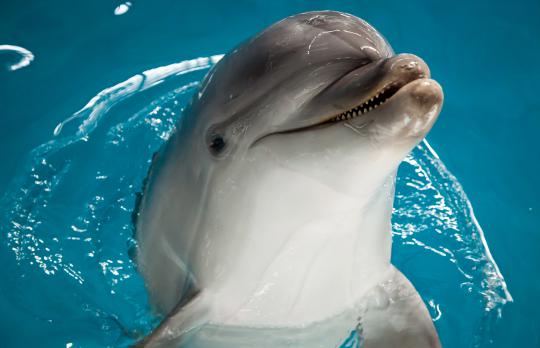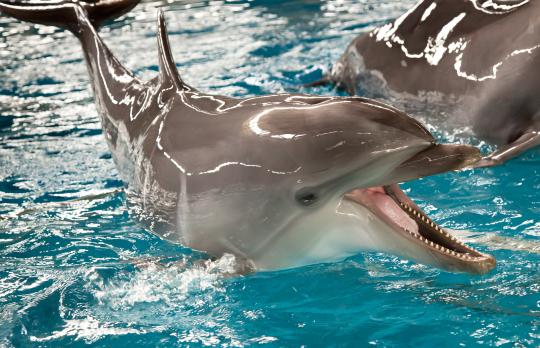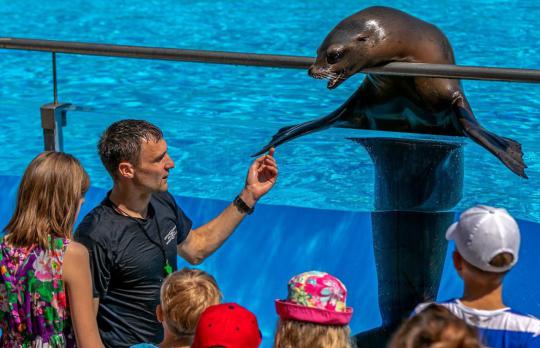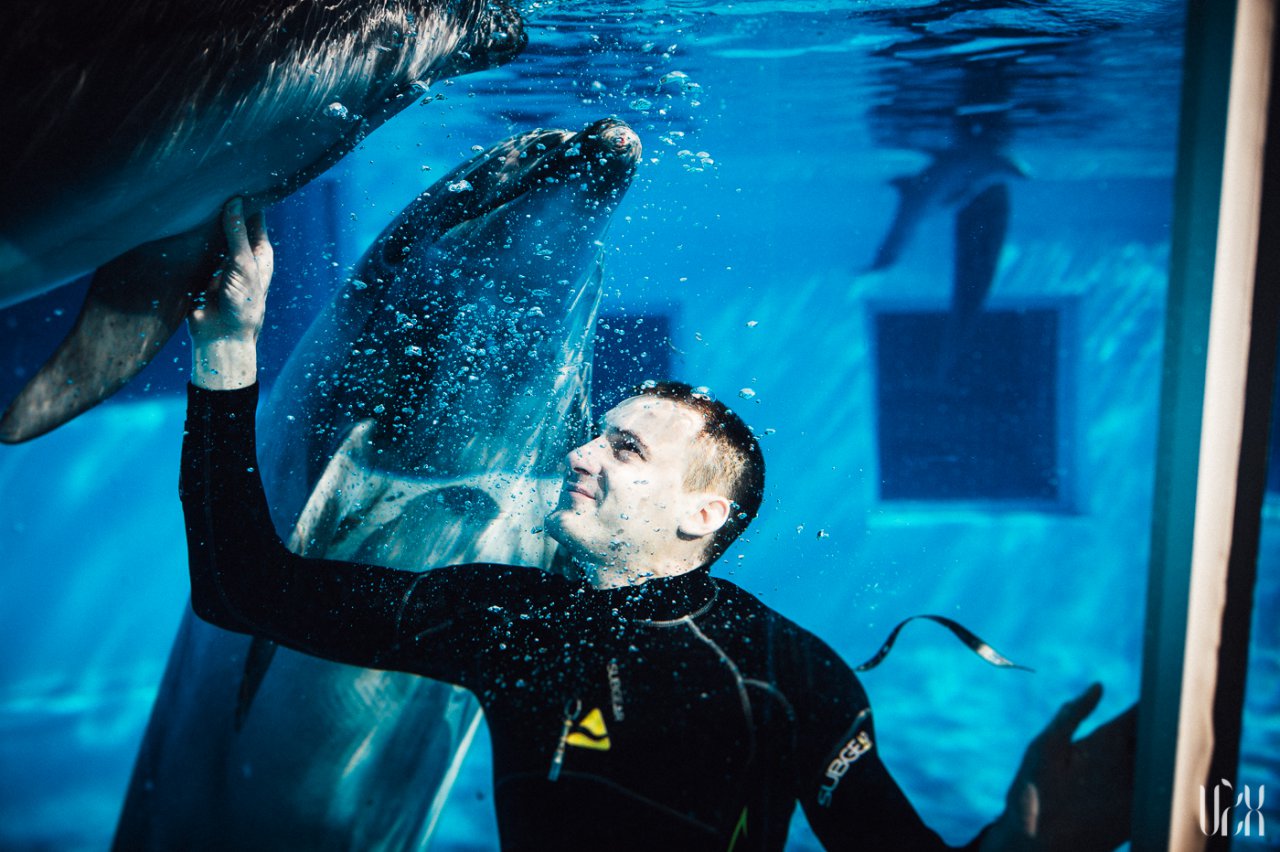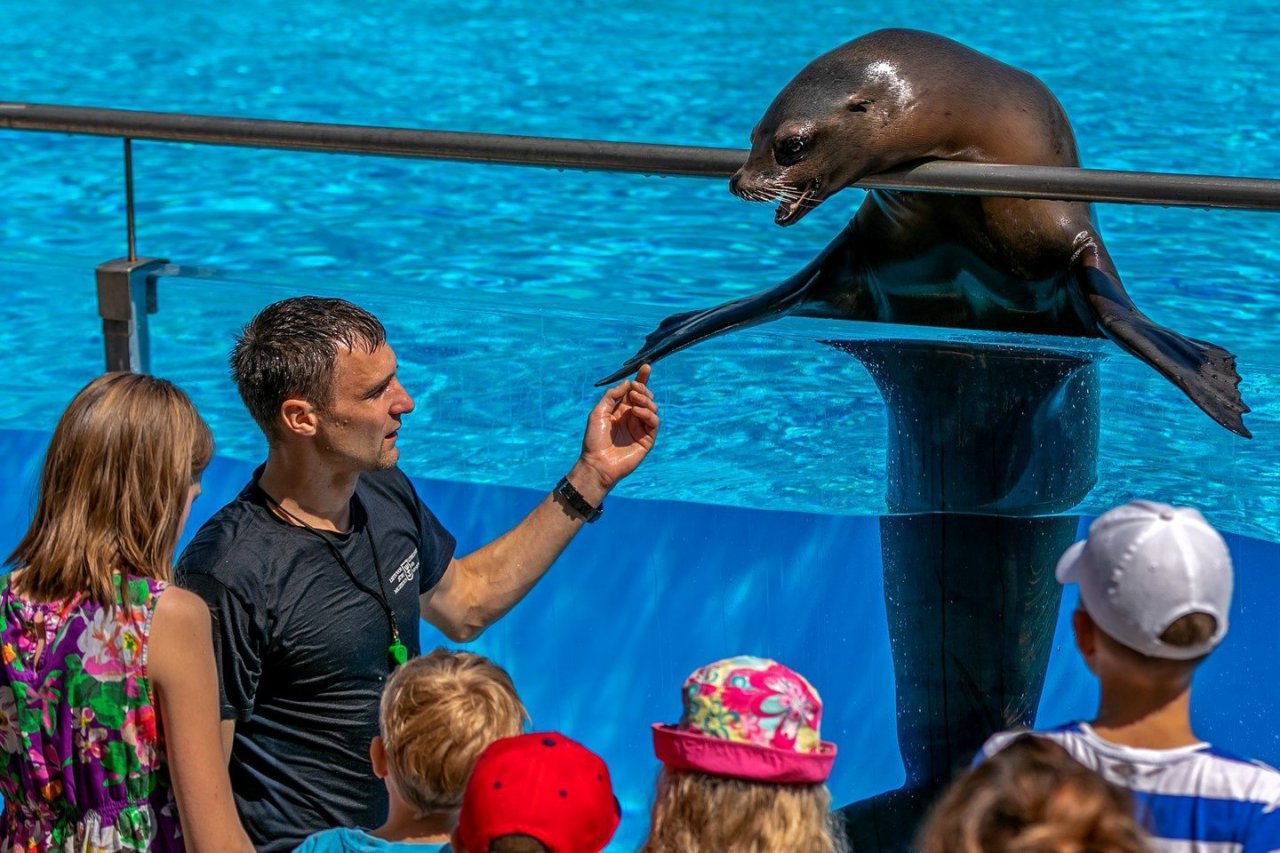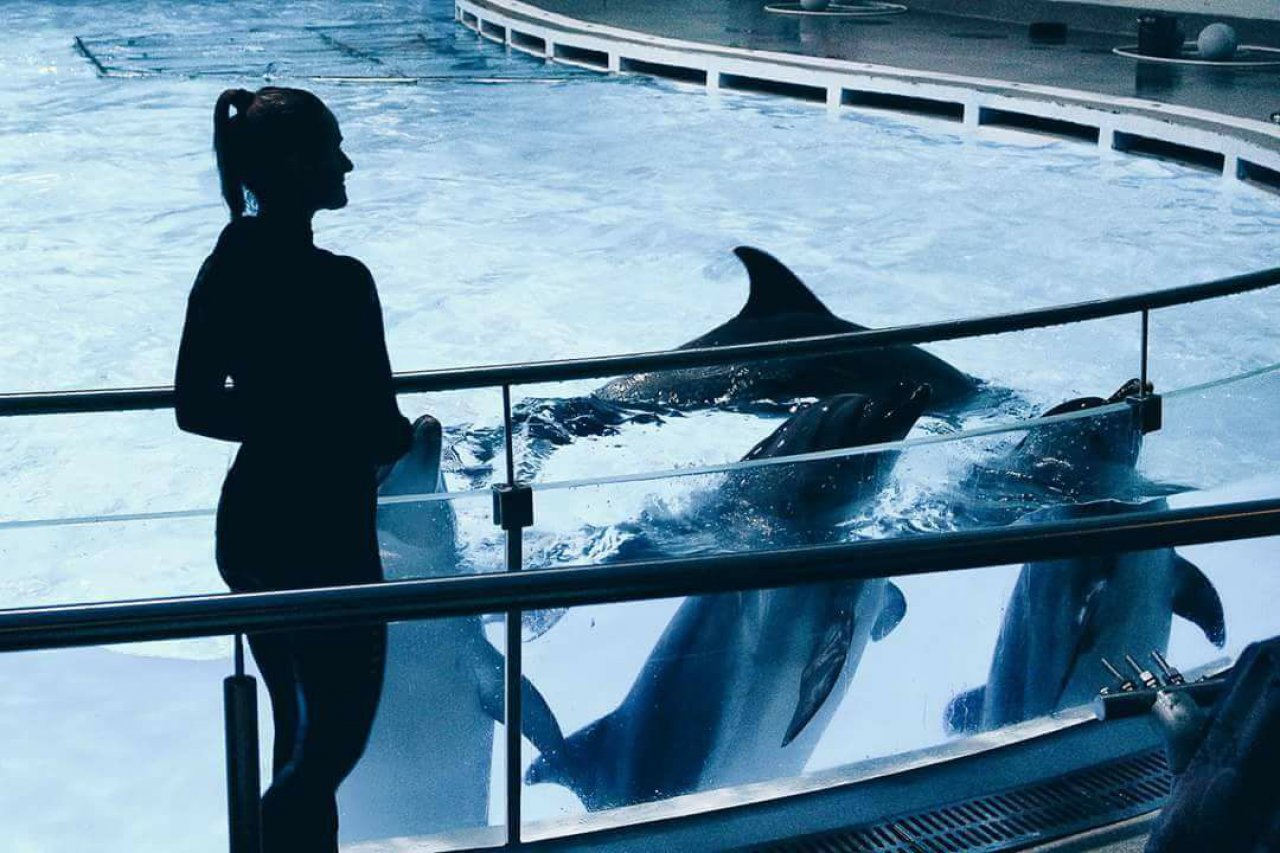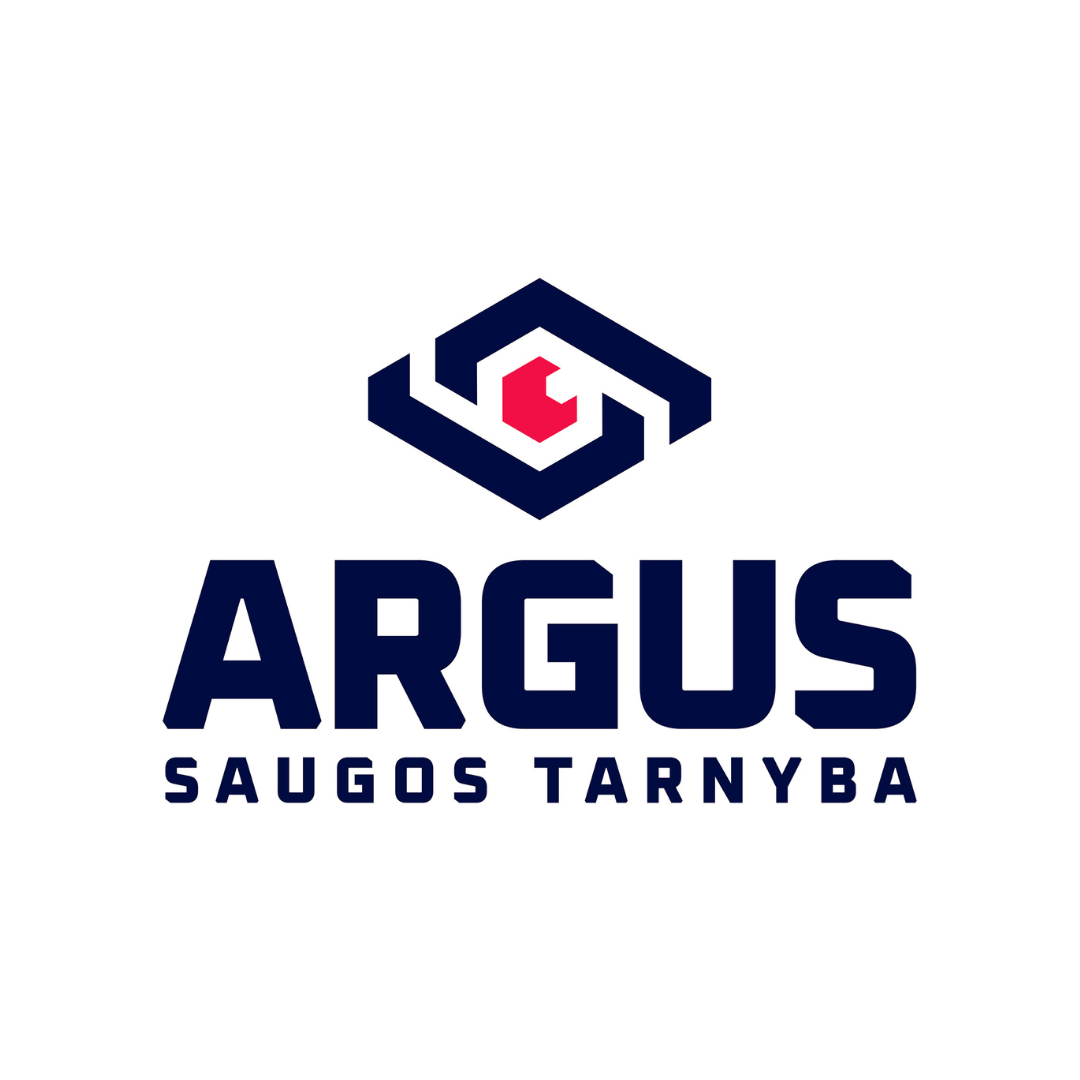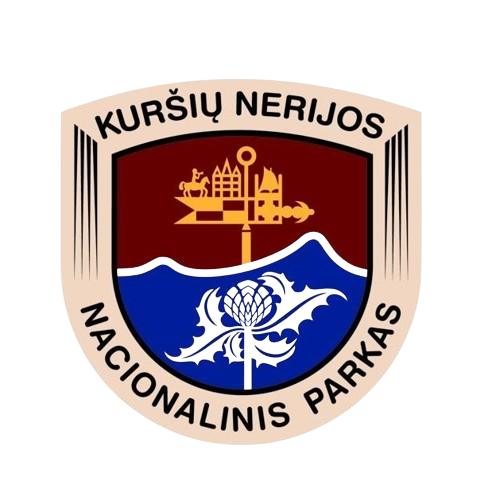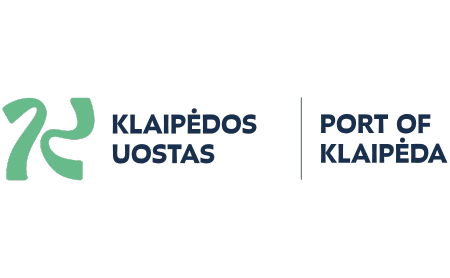On 21 September 1993, the dolphins arrived in Klaipėda. They were transported by a plane and specifically equipped trucks to bring them to the dolphinarium. The dolphinarium was opened at the end of April 1994. Presently, it is the venue for the shows of Black Sea bottlenose dolphins and California sea lions. Since 2003, dolphin-assisted therapy sessions are being arranged there. In 2010–2013, during the reconstruction of the dolphinarium, the dolphins were taken to Greece and returned to three-time larger pools.
The animals are on the World Endangered Species List. Until the mid-20th century, these dolphins were hunted: for example, for the use of their skin in producing waterproof clothing for fishermen, while their meat was used for food. At present, the population of Black Sea bottlenose dolphins is growing again, but they still face many risks: they drown entangled in fishermen’s nets and suffer from pollution.
These species are quite talkative: they emit a variety of sounds, from whistling to pattering or twittering. Not all sounds are audible to the human ear – ultra-high-frequency sounds are used for echolocation so that dolphins could estimate the distance to different objects, their size and speed when underwater. In that way, they also search for fish and find members of their group.
They are highly social and care for weaker or injured members of their group. Stories about dolphins helping injured divers and bringing them to the surface are well known.
The Black Sea bottlenose dolphins (Tursiops truncatus ponticus) live in the Dolphinarium of the Lithuanian Sea Museum. The dolphin belongs to the class of mammals, the suborder of toothed whales. The species representing this suborder can mostly be found in the Black Sea.
The Black Sea bottlenose dolphins give birth to their young every four years; the pregnancy period lasts 12 months. Females give birth to their first calve at the age of seven or eight. Newborn bottlenose dolphins weigh from 11 to 12 kg and nurse from their mother. A grown-up dolphin weighs from 150 to 280 kg and very rarely – up to 360 kg.
Dolphins performances are entertaining educational events that help people get to know these outstanding animals and encourage them to protect and cherish their natural environment, i.e. the sea.
The California sea lions abound on the Pacific coast near the shores of California and Mexico. They love to socialise, so they often gather into numerous colonies in which a wide range of sounds can be heard, ranging from barking and growling to a lion’s roaring.
The sea lions have a diet of various fish and squid. Once they have set off on a hunt, they can spend up to 30 hours. When they see delicious food, they can hurry at the speed of up to 40 km/h, dive about 200 m deep and stay under the water for around 10 minutes. California sea lions have been living at the Lithuanian Sea Museum since 1996.
The total capacity of the pools is 6,000 m3, the depth is up to 6 m. The cwater salinity is maintained by an automatic water preparation system. The water coming from the Baltic Sea is cleaned with mechanical and ozone filters, ultraviolet lamps. The water temperature in the pools is about 20 degrees C, the salinity is 25 ppm. Pool water is monitored and measured 24 hours a day.

